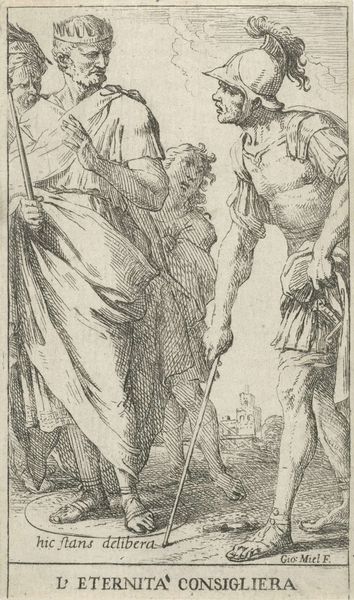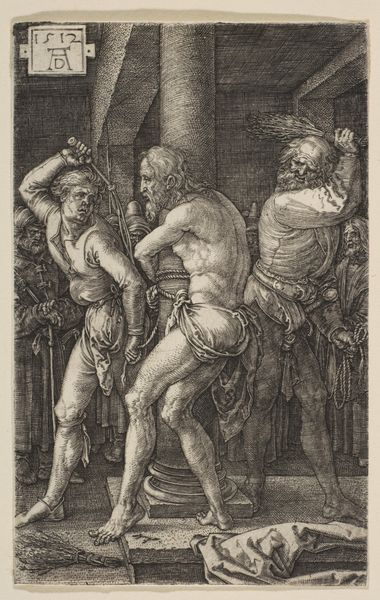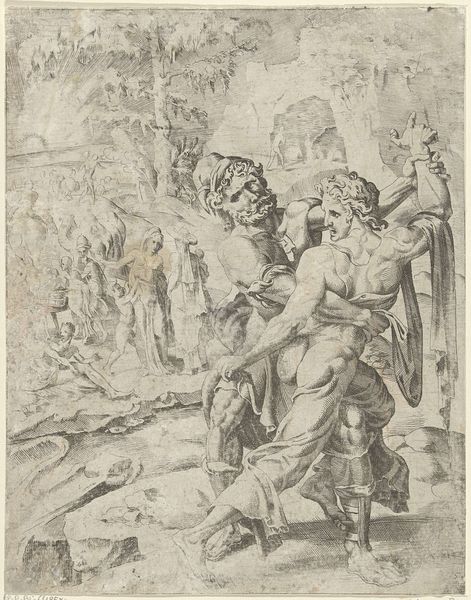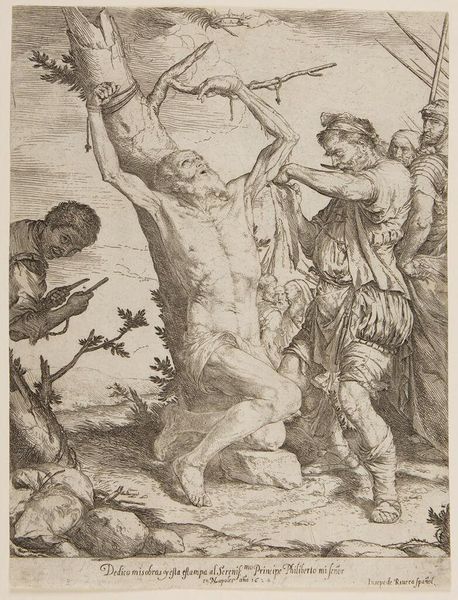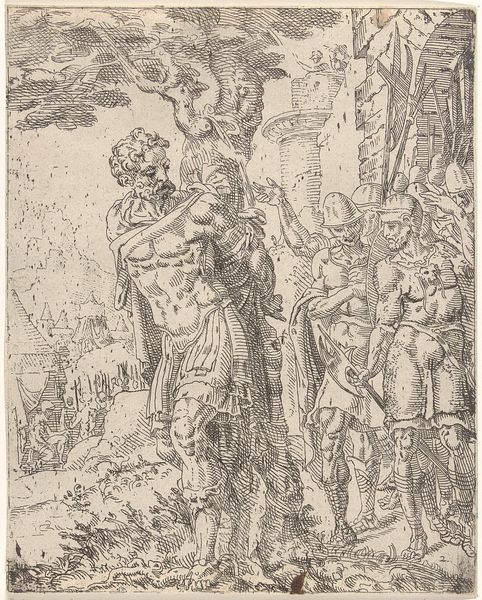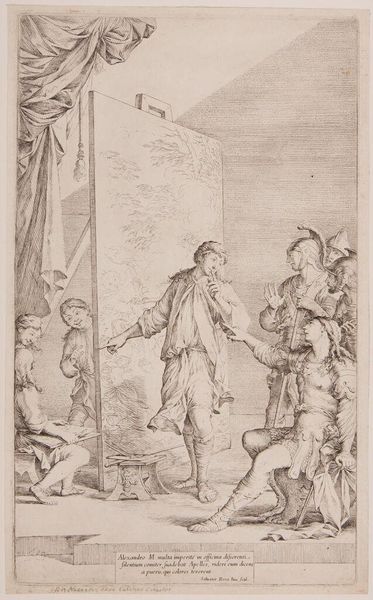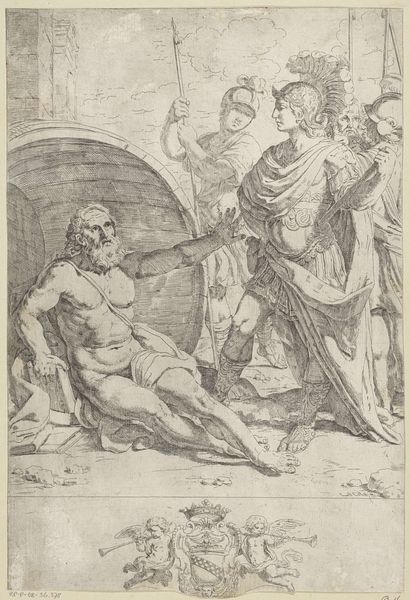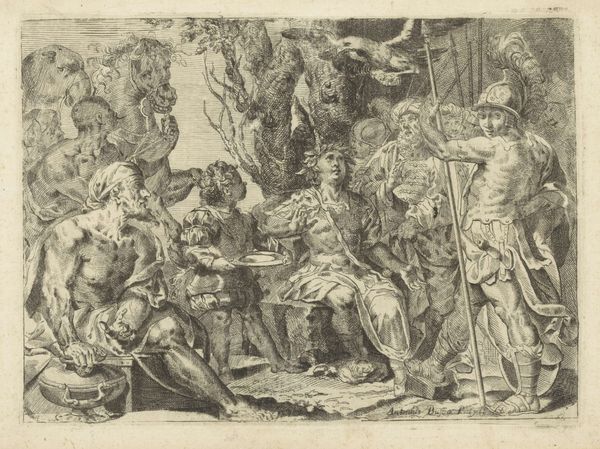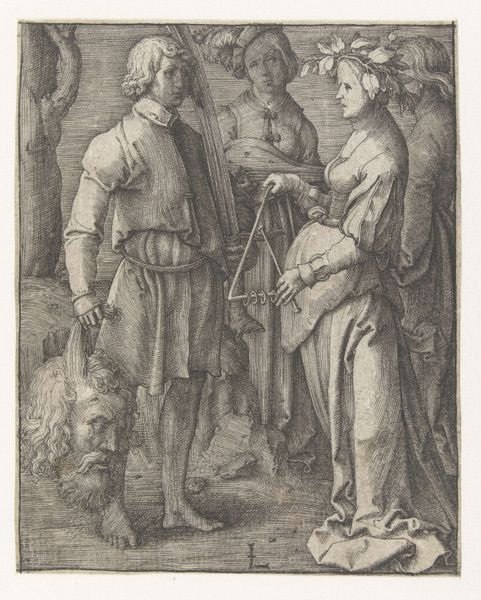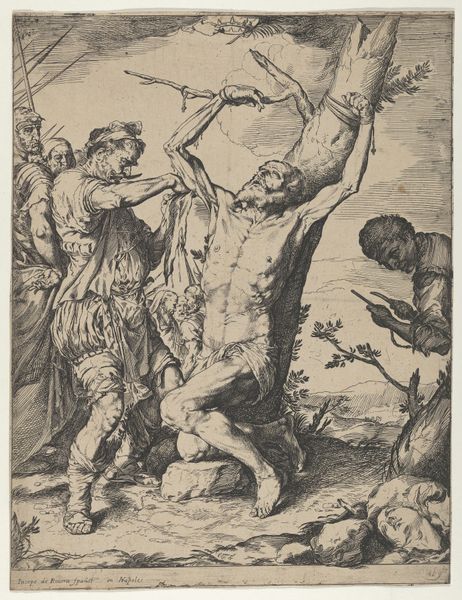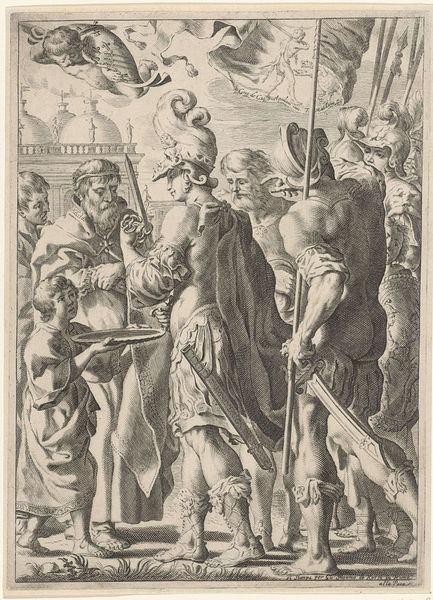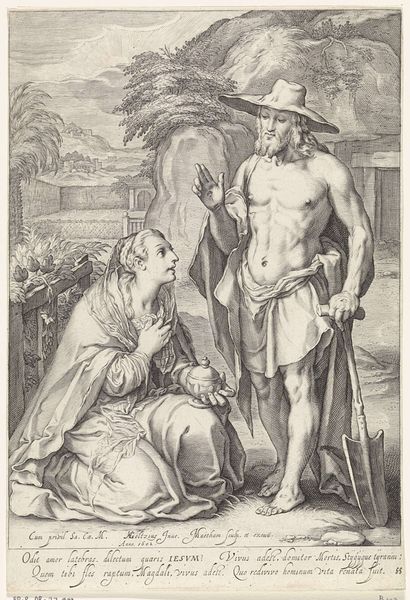
print, engraving
#
baroque
# print
#
figuration
#
line
#
history-painting
#
engraving
Dimensions: height 158 mm, width 85 mm
Copyright: Rijks Museum: Open Domain
Jan Miel etched "Popilius Laenas tekent een cirkel" probably around the mid-17th century. The central motif here is the circle Popilius Laenas draws around King Antiochus. The circle, an ancient symbol of totality and eternity, here signifies the boundary of power. This act of demarcation, a line drawn in the sand, is a potent assertion of Roman authority, compelling Antiochus to decide before crossing it. Think of similar boundaries—protective circles, sacred spaces marked in antiquity or the Renaissance, all delineating what is permissible. These are not merely geometric figures, but psychological thresholds. The fear, tension, and power dynamics captured in the figures' expressions tap into our collective memory. The image is less about a historical event and more about the timeless struggle between power and submission, resonating deeply within the viewer's subconscious. The cyclical nature of history ensures that such symbolic gestures resurface, each time colored by new contexts.
Comments
No comments
Be the first to comment and join the conversation on the ultimate creative platform.
